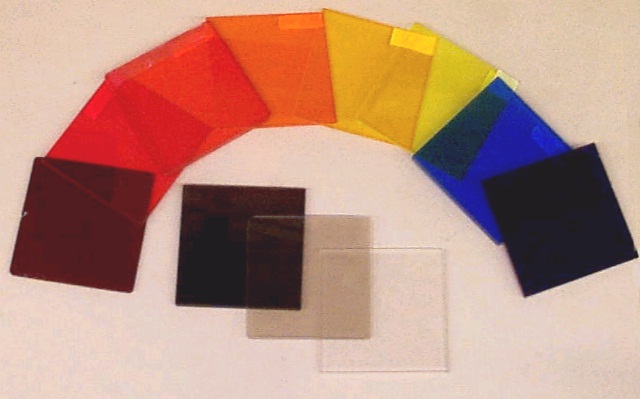|
Metamaterial
A metamaterial (from the Greek word μετά ''meta'', meaning "beyond" or "after", and the Latin word ''materia'', meaning "matter" or "material") is a type of material engineered to have a property, typically rarely observed in naturally occurring materials, that is derived not from the properties of the base materials but from their newly designed structures. Metamaterials are usually fashioned from multiple materials, such as metals and plastics, and are usually arranged in repeating patterns, at scales that are smaller than the wavelengths of the phenomena they influence. Their precise shape, geometry, size, orientation, and arrangement give them their "smart" properties of manipulating electromagnetic, acoustic, or even seismic waves: by blocking, absorbing, enhancing, or bending waves, to achieve benefits that go beyond what is possible with conventional materials. Appropriately designed metamaterials can affect waves of electromagnetic radiation or sound in a manner n ... [...More Info...] [...Related Items...] OR: [Wikipedia] [Google] [Baidu] |
Superlens
A superlens, or super lens, is a lens which uses metamaterials to go beyond the diffraction limit. The diffraction limit is a feature of conventional lenses and microscopes that limits the fineness of their resolution depending on the illumination wavelength and the numerical aperture (NA) of the objective lens. Many lens designs have been proposed that go beyond the diffraction limit in some way, but constraints and obstacles face each of them. History In 1873 Ernst Abbe reported that conventional lenses are incapable of capturing some fine details of any given image. The superlens is intended to capture such details. This limitation of conventional lenses has inhibited progress in the biological sciences. This is because a virus or DNA molecule cannot be resolved with the highest powered conventional microscopes. This limitation extends to the minute processes of cellular proteins moving alongside microtubules of a living cell in their natural environments. Additionally, co ... [...More Info...] [...Related Items...] OR: [Wikipedia] [Google] [Baidu] |
Negative-index Metamaterial
Negative-index metamaterial or negative-index material (NIM) is a metamaterial whose refractive index for an electromagnetic wave has a negative value over some frequency range. NIMs are constructed of periodic basic parts called unit cells, which are usually significantly smaller than the wavelength of the externally applied electromagnetic radiation. The unit cells of the first experimentally investigated NIMs were constructed from circuit board material, or in other words, wires and dielectrics. In general, these artificially constructed cells are stacked or planar and configured in a particular repeated pattern to compose the individual NIM. For instance, the unit cells of the first NIMs were stacked horizontally and vertically, resulting in a pattern that was repeated and intended (see below images). Specifications for the response of each unit cell are predetermined prior to construction and are based on the intended response of the entire, newly constructed, material. I ... [...More Info...] [...Related Items...] OR: [Wikipedia] [Google] [Baidu] |
Index Of Refraction
In optics, the refractive index (or refraction index) of an optical medium is the ratio of the apparent speed of light in the air or vacuum to the speed in the medium. The refractive index determines how much the path of light is bent, or refracted, when entering a material. This is described by Snell's law of refraction, , where and are the angle of incidence and angle of refraction, respectively, of a ray crossing the interface between two media with refractive indices and . The refractive indices also determine the amount of light that is reflected when reaching the interface, as well as the critical angle for total internal reflection, their intensity (Fresnel equations) and Brewster's angle. The refractive index, n, can be seen as the factor by which the speed and the wavelength of the radiation are reduced with respect to their vacuum values: the speed of light in a medium is , and similarly the wavelength in that medium is , where is the wavelength of that light in v ... [...More Info...] [...Related Items...] OR: [Wikipedia] [Google] [Baidu] |
Material
A material is a matter, substance or mixture of substances that constitutes an Physical object, object. Materials can be pure or impure, living or non-living matter. Materials can be classified on the basis of their physical property, physical and chemical property, chemical properties, or on their geological origin or biological function. Materials science is the study of materials, their properties and their applications. Raw materials can be processed in different ways to influence their properties, by purification, shaping or the introduction of other materials. New materials can be produced from raw materials by Chemical synthesis, synthesis. In Industrial sector, industry, materials are inputs to list of manufacturing processes, manufacturing processes to produce products or more complex materials, and the nature and quantity of materials used may form part of the calculation for the cost of a product or delivery under contract, such as where contract costs are calculated ... [...More Info...] [...Related Items...] OR: [Wikipedia] [Google] [Baidu] |
Infrastructure Security
Infrastructure security is the security provided to protect infrastructure, especially critical infrastructure, such as airports, highways rail transport, hospitals, bridges, transport hubs, network communications, media, the electricity grid, dams, power plants, seaports, oil refineries, liquefied natural gas terminals and water systems. Infrastructure security seeks to limit vulnerability of these structures and systems to sabotage, terrorism, and contamination. Critical infrastructures naturally utilize information technology as this capability has become more and more available. As a result, they have become highly interconnected, and interdependent. Intrusions and disruptions in one infrastructure might provoke unexpected failures in others, which makes handing interdependencies a key concern. There are several examples where an incident at one critical infrastructure site affects others. For example, in 2003, the Northeastern American areas experienced a power outage that a ... [...More Info...] [...Related Items...] OR: [Wikipedia] [Google] [Baidu] |
Optical Filter
An optical filter is a device that selectively transmits light of different wavelengths, usually implemented as a glass plane or plastic device in the optical path, which are either dyed in the bulk or have interference coatings. The optical properties of filters are completely described by their frequency response, which specifies how the magnitude and phase of each frequency component of an incoming signal is modified by the filter. Filters mostly belong to one of two categories. The simplest, physically, is the absorptive filter; then there are interference or dichroic filters. Many optical filters are used for optical imaging and are manufactured to be transparent; some used for light sources can be translucent. Optical filters selectively transmit light in a particular range of wavelengths, that is, colours, while absorbing the remainder. They can usually pass long wavelengths only (longpass), short wavelengths only (shortpass), or a band of wavelengths, bloc ... [...More Info...] [...Related Items...] OR: [Wikipedia] [Google] [Baidu] |
Medical Device
A medical device is any device intended to be used for medical purposes. Significant potential for hazards are inherent when using a device for medical purposes and thus medical devices must be proved safe and effective with reasonable assurance before regulating governments allow marketing of the device in their country. As a general rule, as the associated risk of the device increases the amount of testing required to establish safety and efficacy also increases. Further, as associated risk increases the potential benefit to the patient must also increase. Discovery of what would be considered a medical device by modern standards dates as far back as in Baluchistan where Neolithic dentists used flint-tipped drills and bowstrings. Study of Archaeology, archeology and Roman medical literature also indicate that many types of medical devices were in widespread use during the time of ancient Rome. In the United States it was not until the Federal Food, Drug, and Cosmetic Act ( ... [...More Info...] [...Related Items...] OR: [Wikipedia] [Google] [Baidu] |
Aerospace Engineering
Aerospace engineering is the primary field of engineering concerned with the development of aircraft and spacecraft. It has two major and overlapping branches: aeronautical engineering and astronautical engineering. Avionics engineering is similar, but deals with the electronics side of aerospace engineering. "Aeronautical engineering" was the original term for the field. As flight technology advanced to include vehicles operating in outer space, the broader term "aerospace engineering" has come into use. Aerospace engineering, particularly the astronautics branch, is often colloquially referred to as "rocket science". Overview Flight vehicles are subjected to demanding conditions such as those caused by changes in atmospheric pressure and temperature, with structural loads applied upon vehicle components. Consequently, they are usually the products of various technological and engineering disciplines including aerodynamics, air propulsion, avionics, materials science, st ... [...More Info...] [...Related Items...] OR: [Wikipedia] [Google] [Baidu] |
Radome
A radome (a portmanteau of "radar" and "dome") is a structural, weatherproof enclosure that protects a radar antenna (radio), antenna. The radome is constructed of material transparent to radio waves. Radomes protect the antenna from weather and conceal antenna electronic equipment from view. They also protect nearby personnel from being accidentally struck by quickly rotating antennas. Radomes can be constructed in several shapes spherical, geodesic dome, geodesic, planar, etc. depending on the particular application, using various construction materials such as fiberglass, polytetrafluoroethylene, polytetrafluoroethylene (PTFE)-coated fabric, and others. In addition to radar protection, radomes on aircraft platforms also act as aircraft fairing, fairings that streamline the antenna system, thus reducing drag (physics), drag. When found on fixed-wing aircraft with forward-looking radar, as are commonly used for object or weather detection, the nose cones often additionally ... [...More Info...] [...Related Items...] OR: [Wikipedia] [Google] [Baidu] |
Solar Power
Solar power, also known as solar electricity, is the conversion of energy from sunlight into electricity, either directly using photovoltaics (PV) or indirectly using concentrated solar power. Solar panels use the photovoltaic effect to convert light into an electric current. Concentrated solar power systems use lenses or mirrors and solar tracking systems to focus a large area of sunlight to a hot spot, often to drive a steam turbine. Photovoltaics (PV) were initially solely used as a source of electricity for small and medium-sized applications, from the calculator powered by a single solar cell to remote homes powered by an off-grid rooftop PV system. Commercial concentrated solar power plants were first developed in the 1980s. Since then, as the cost of solar panels has fallen, grid-connected solar PV systems' capacity and production has doubled about every three years. Three-quarters of new generation capacity is solar, with both millions of rooftop installatio ... [...More Info...] [...Related Items...] OR: [Wikipedia] [Google] [Baidu] |
Crowd Control
Crowd control is a public security practice in which large crowds are managed in order to prevent the outbreak of crowd crushes, affray, fights involving drunk and disorderly people or riots. Crowd crushes in particular can cause many hundreds of fatalities. Effective crowd management is about managing expected and unexpected crowd occurrences. Crowd control can involve privately hired security guards as well as police officers. Crowd control is often used at large, public gatherings like street fairs, music festivals, stadiums and public demonstrations. At some events, security guards and police use metal detectors and sniffer dogs to prevent weapons and drugs being brought into a venue. Equipment Materials such as stanchions, crowd control barriers, fences and decals painted on the ground can be used to direct a crowd. A common method of crowd control is to use high visibility fencing to divert and corral pedestrian traffic to safety when there is any potential threat ... [...More Info...] [...Related Items...] OR: [Wikipedia] [Google] [Baidu] |









